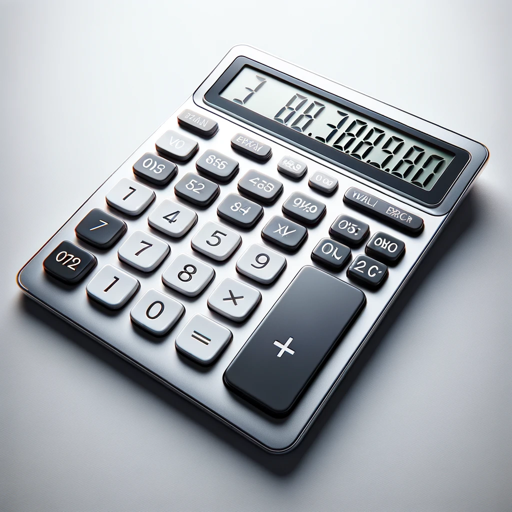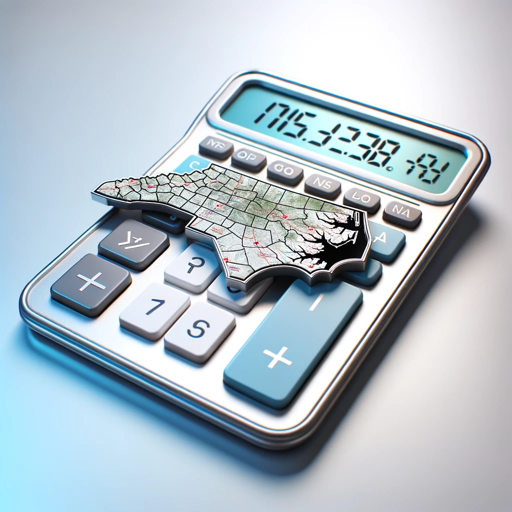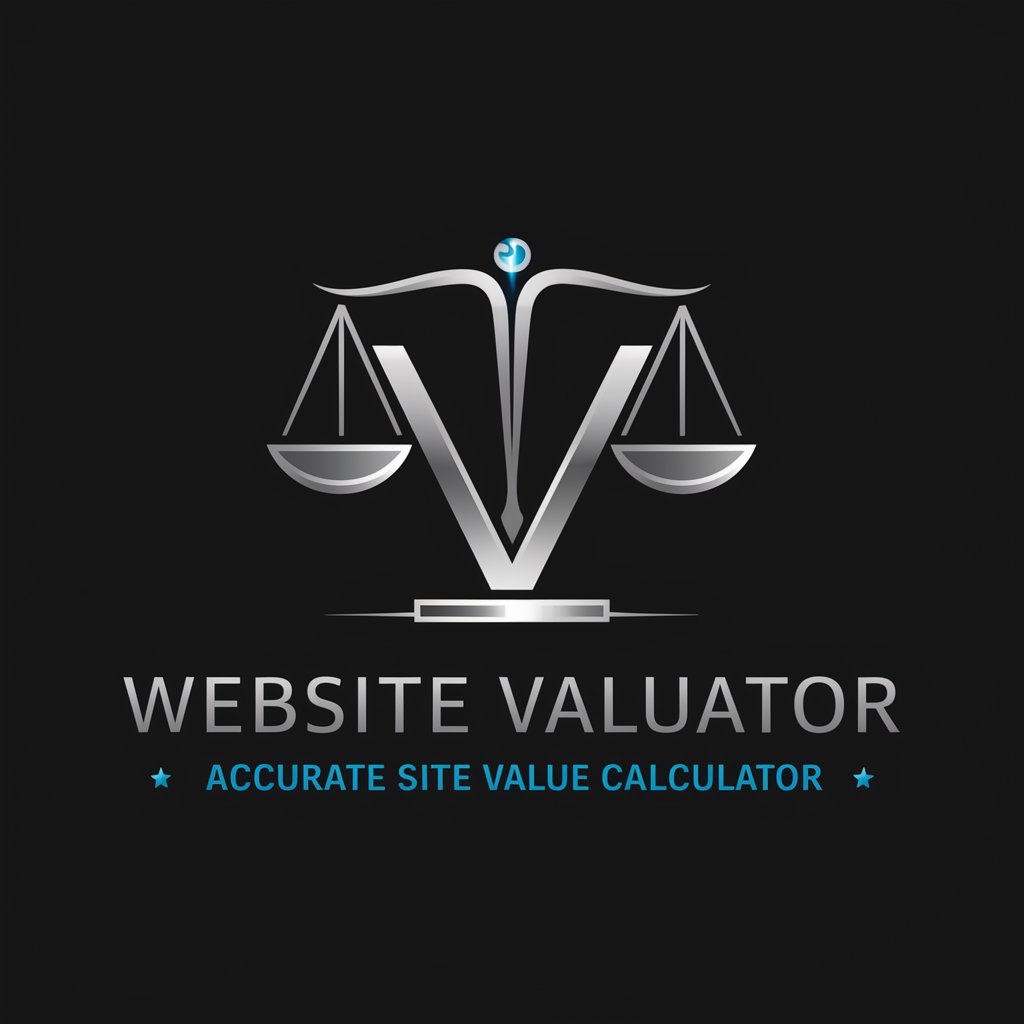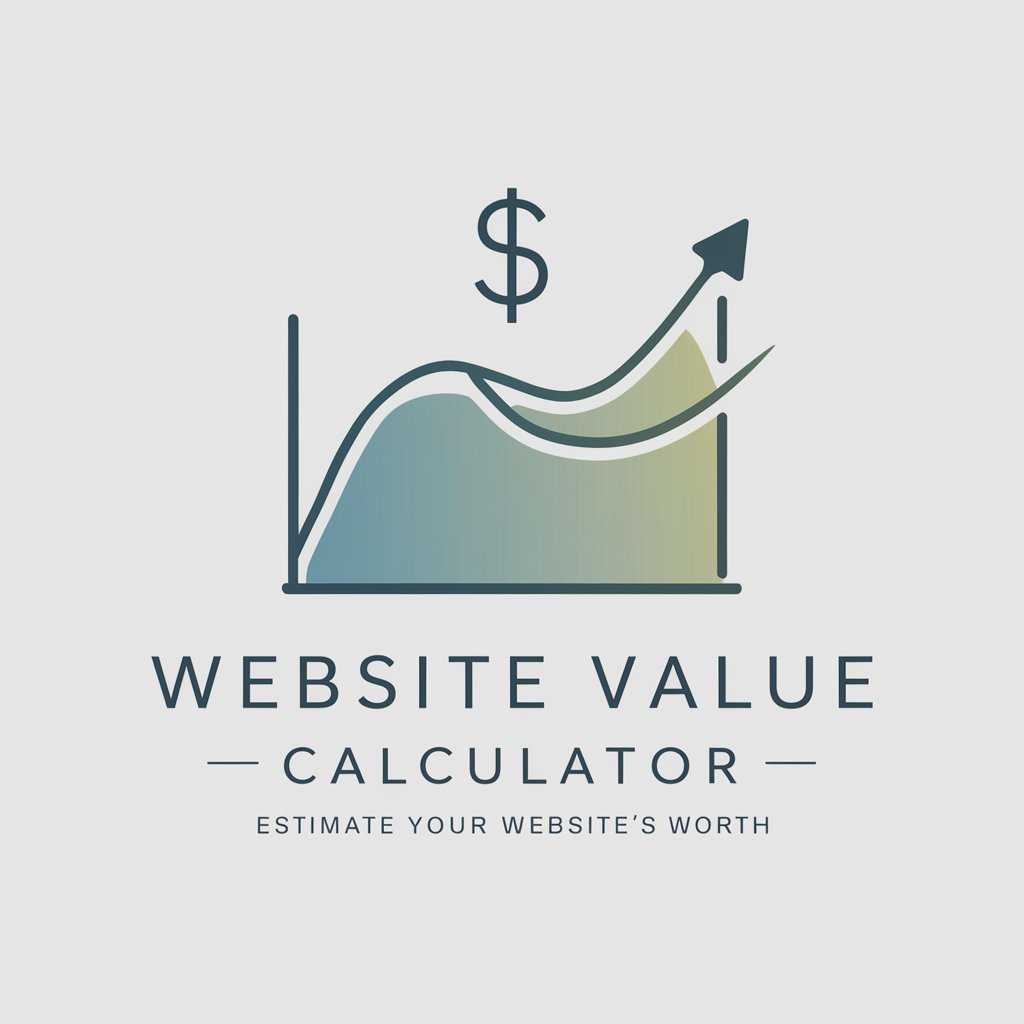Asset Depreciation Calculator - Asset Depreciation Calculator
Welcome! How can I assist with your asset depreciation calculations?
Simplify Depreciation with AI-Powered Calculations
How do I calculate straight line depreciation?
Explain declining balance depreciation.
What is the lifespan of office equipment for depreciation?
Can you help me with the depreciation of my car?
Get Embed Code
Overview of the Asset Depreciation Calculator
The Asset Depreciation Calculator is designed to assist users in calculating the depreciation of assets over time. Depreciation is a method of allocating the cost of a tangible or physical asset over its useful life, reflecting the asset's wear and tear, deterioration, or obsolescence. This tool is critical for financial planning, tax deductions, and accounting processes, ensuring that businesses and individuals can accurately assess the current value of their assets and plan for future investments. For example, a business purchases a piece of machinery for $100,000 with an expected life of 10 years. Using the straight-line method of depreciation, this calculator can help determine an annual depreciation expense of $10,000, enabling the business to spread the cost of the asset evenly over its useful life. Powered by ChatGPT-4o。

Key Functions of the Asset Depreciation Calculator
Straight-Line Depreciation Calculation
Example
A company buys office furniture for $20,000 with a salvage value of $2,000 and a useful life of 5 years. The calculator provides an annual depreciation expense of $3,600.
Scenario
Used by businesses to evenly allocate the cost of assets over their useful life, ideal for assets whose benefit remains consistent over time.
Declining Balance Depreciation Calculation
Example
An IT firm purchases a server for $15,000 with a useful life of 5 years and decides to use double declining balance depreciation. The calculator helps in computing an accelerated depreciation expense, more significant in the first year and gradually decreasing.
Scenario
Appropriate for assets that lose value more quickly in their initial years, such as vehicles and technology.
Units of Production Depreciation Calculation
Example
A manufacturing entity acquires a machine for $50,000 expected to produce 100,000 units over its lifespan. In a year, it produces 20,000 units. The calculator determines the depreciation expense based on actual usage.
Scenario
Suitable for assets whose wear and tear is more closely linked to usage rather than time, like manufacturing equipment.
Target User Groups for the Asset Depreciation Calculator
Small and Medium-sized Enterprises (SMEs)
SMEs benefit from using the calculator to manage financial records accurately, plan for taxes, and make informed decisions regarding asset investments and disposals.
Accountants and Financial Planners
These professionals use the calculator to provide advisory services, ensuring compliance with accounting standards and tax laws for their clients.
Individual Investors
Investors utilize the calculator to understand the depreciation implications on investment properties or other significant assets, aiding in financial planning and tax optimization.

Guidelines for Using Asset Depreciation Calculator
1
Start by accessing the tool online without the need for a subscription or login, ensuring a hassle-free initiation.
2
Input the purchase price, salvage value, useful life, and acquisition date of the asset to determine its depreciation.
3
Select the depreciation method (e.g., straight-line, declining balance) that best suits your asset's nature and accounting requirements.
4
Review the detailed depreciation schedule generated, which includes annual depreciation expense, accumulated depreciation, and book value for each year.
5
Utilize the export feature to download the depreciation schedule for record-keeping or further financial analysis.
Try other advanced and practical GPTs
Website Value Calculator for UK Websites
AI-Powered Website Valuation at Your Fingertips

Website Worth Calculator - Estimate Market Value
AI-powered, precise website valuation tool.

40 Year Mortgage Calculator
Empowering financial decisions with AI

Value My Website - Online Website Value Calculator
AI-Powered Website Valuation Tool

Mortgage Calculator North Carolina (NC)
Empowering Homeownership with AI

Website Valuator - Accurate Site Value Calculator
AI-powered Website Value Estimation

Check the Value of My Website - Value Estimator
Empower your web valuation with AI

Website Estimator - Site Worth & Domain Value Tool
AI-powered Website Valuation at Your Fingertips

How Much is My Website Worth? - Website Valuation
AI-Powered Website Valuation at Your Fingertips

Website Value Lookup - Value My Website Worth
Estimate your website's worth with AI

Website Value Checker - Estimate the Worth
Empowering your web value with AI precision.

Website Value Appraisal Tool - Value My Website
AI-Powered Website Valuation in Seconds

Asset Depreciation Calculator Q&A
What is the straight-line method of depreciation?
The straight-line method evenly spreads the cost of an asset over its useful life. It's calculated by subtracting the salvage value from the purchase price and dividing by the asset's lifespan.
Can I calculate depreciation for partial years?
Yes, the calculator allows for partial-year depreciation calculations. It can prorate the depreciation expense based on the number of months the asset was in use during the first and last year.
Is it possible to compare different depreciation methods using the calculator?
Absolutely. The tool enables users to compare depreciation schedules across different methods, allowing for informed decision-making on the most tax-efficient or financially suitable method.
How does depreciation affect my business taxes?
Depreciation lowers taxable income by spreading the cost of an asset over its useful life, reducing the amount of taxes owed in the years the asset is depreciated.
Can the Asset Depreciation Calculator handle multiple assets?
Yes, the tool is designed to manage the depreciation schedules of multiple assets simultaneously, providing a comprehensive overview of your assets' depreciation.
